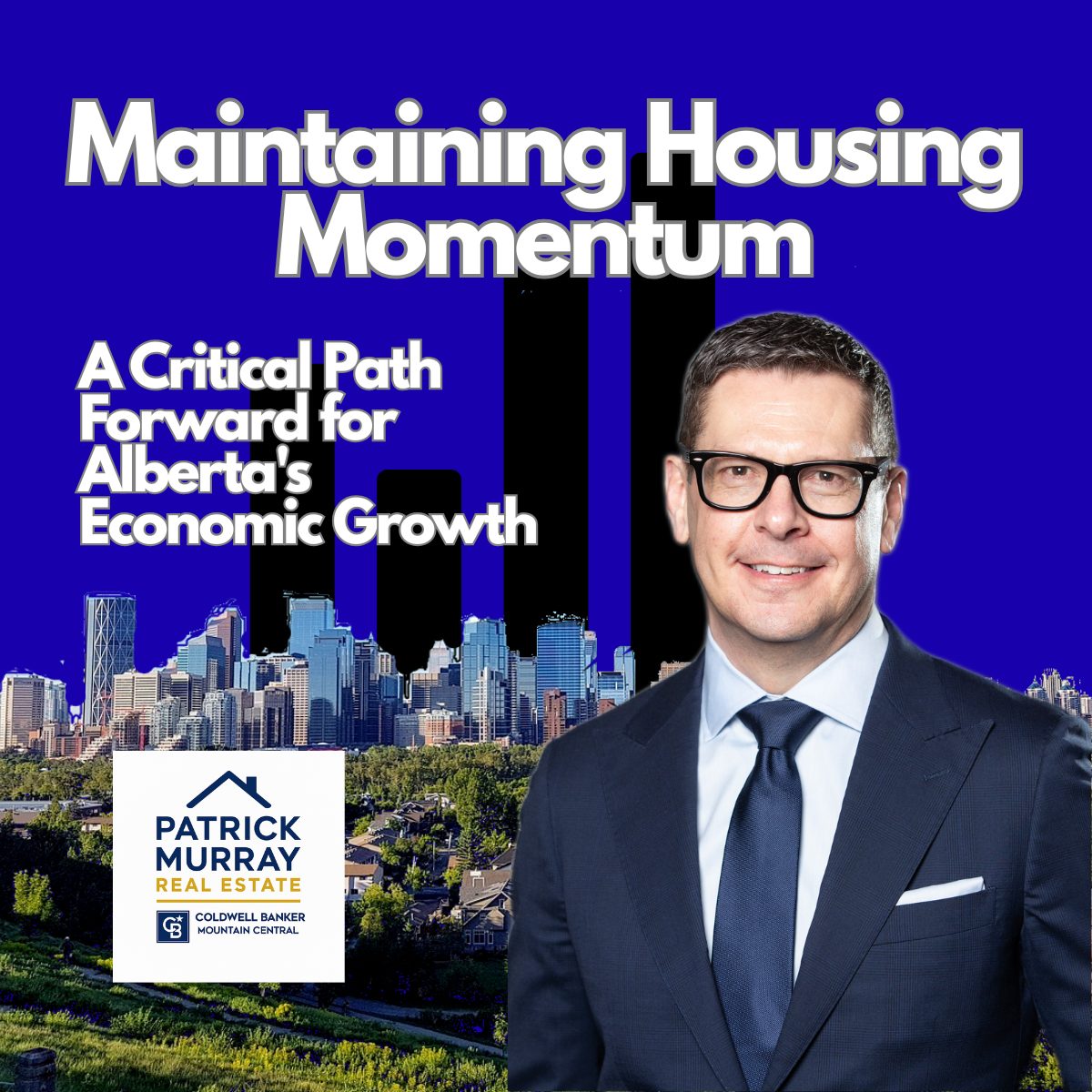Navigating Calgary’s Evolving Real Estate Market: Opportunities in a Balanced Environment

As we move through September 2025, I’ve been closely monitoring the shifts in our Calgary real estate market, and I’m excited to share some insights that could help you make informed decisions about your property journey.
Recent analysis by Joanna Gerber, featuring insights from top Calgary realtor Jesse Davies, paints a picture of a market that’s finding its equilibrium after years of rapid growth. While some may view the current conditions as concerning, I see this as a return to a healthier, more sustainable market that benefits both buyers and sellers in different ways.
Understanding Where We Stand
The numbers tell an interesting story. With Calgary’s benchmark home price at $577,200 as of August 2025, we’re seeing a natural correction that brings us back to balanced conditions. Yes, there’s been a 4.1% decline from last year, but as Davies wisely points out, “What feels like a loss of momentum is, in fact, a return to a healthier and more sustainable market balance.”
The 48% increase in active listings compared to last year means buyers now have more choices, while sellers need to be more strategic. This isn’t market weakness. It’s market maturity.
The Location Advantage Still Matters
What excites me most about our current market is how location continues to be king. Established inner-city neighborhoods like Beltline, Kensington, and Parkdale remain incredibly attractive to buyers. These areas benefit from:
- Proximity to employment centers
- Excellent transit connections
- Rich cultural amenities
- Top-rated schools
Properties in these sought-after locations, especially detached homes with character or recent renovations, are still moving well and commanding strong prices.
Smart Strategies for Today’s Market
For my seller clients, I’m emphasizing three key strategies:
- Strategic Pricing: Gone are the days of testing the market with inflated asking prices. Accurate, research-backed pricing gets results.
- Exceptional Presentation: With more inventory available, your home needs to shine. Professional staging and photography aren’t luxuries, they are necessities.
- Targeted Marketing: Understanding your ideal buyer and crafting marketing that speaks directly to them makes all the difference.
For detached homes, the news is particularly encouraging. As Davies notes, “Calgary is experiencing a shortage of detached homes for sale, especially in certain neighbourhoods,” which means well-maintained, properly priced detached properties are still performing strongly.
Looking Forward with Confidence
The CMHC Summer 2025 Outlook projects Calgary home prices could reach $600,000-$680,000 in 2026, with continued growth into 2027. This forward-looking perspective reinforces Calgary’s strong fundamentals:
- Robust population growth
- Economic diversification
- Steady urban development
Making Your Move
Whether you’re considering selling to upsize, downsize, or make a lifestyle change, today’s market still offers excellent opportunities. The key is working with professionals who understand the nuances of each neighborhood and property type.
As Davies emphasizes, “There is no universal answer to whether September 2025 is the right moment to sell in Calgary. The decision depends on property type, location, and personal circumstances.”
That’s where I come in. My role is to help you navigate these individual factors and create a strategy that aligns with your goals, whether that’s maximizing your sale price, finding your dream home, or making a smart investment decision.
The Calgary market may feel different from the frenzied pace of recent years, but it’s creating new opportunities for those ready to embrace a more strategic approach. If you’re considering making a move, I’d love to discuss how current conditions could work in your favor.
Referenced from “Market Analysis: Is September 2025 the Right Time to Sell in Calgary?” by Joanna Gerber, featuring insights from Calgary realtor Jesse Davies, September 17, 2025.
Detached & Semi-Detached Homes: Calgary’s Resilient Market Segments

Calgary’s housing market has been making plenty of headlines lately, with rising inventory and shifting conditions. But not all property types are moving in the same direction. While condos and row homes are seeing more downward pressure, detached and semi-detached homes have proven to be far more resilient. In fact, these two segments are showing signs of stability, and in some cases, even modest growth.
So, why are detached and semi-detached homes weathering the shifts better?
Limited Supply in the Right Places
Many of Calgary’s most sought-after neighbourhoods simply don’t have the space for endless new detached or semi-detached builds. That means supply remains tight, even as inventory climbs in other property types. When buyers want a family home with more room, a yard, and a sense of privacy, there aren’t many substitutes.
For example, West Calgary communities such as Aspen Woods and West Springs continue to see strong demand, with detached homes holding their value thanks to limited land availability and high desirability. Similarly, Inner City areas like Altadore and Mount Pleasant remain competitive for semi-detached homes, as buyers value both the location and modern layouts these homes offer.
Buyer Demand for Space
Since the pandemic, buyer preferences have shifted toward space, flexibility, and privacy. Detached and semi-detached homes naturally fit that lifestyle. Even with higher borrowing costs, many buyers are willing to stretch their budget to secure this kind of property rather than pivot to higher-density housing.
In Northwest Calgary communities like Tuscany and Scenic Acres, detached homes are popular with families looking for larger lots and easy access to schools and transit. Meanwhile, semi-detached homes in neighbourhoods like Killarney and Capitol Hill continue to attract professionals and young families who want more space without leaving the central core.
Less Impact from Oversupply
Condo and row-home markets are seeing more pressure from new projects hitting the market. Detached and semi-detached homes, on the other hand, don’t face that same wave of competition. This helps keep values more stable, especially in established areas where land is limited.
Price Stability Inspires Confidence
Even as overall sales activity has slowed, benchmark prices for detached and semi-detached homes remain steady in most districts. In some cases, we’re still seeing modest year-over-year gains. For homeowners and buyers alike, this stability builds confidence in these market segments.
What This Means for Buyers & Sellers
For buyers, especially those considering semi-detached homes, this could be the perfect balance between affordability and lifestyle. You gain more space and privacy than a condo or row home, but often at a price point below a full detached property.
For sellers, the relative strength of these segments means pricing has held up well. Even in a market that’s shifting toward balance, detached and semi-detached homes are still in demand, particularly in established or high-demand communities.
Looking Ahead
While we may see modest adjustments in the months ahead, detached and semi-detached homes are expected to remain among Calgary’s strongest housing segments. Whether you’re in family-oriented suburbs like Mahogany and Evanston or trendy inner-city neighbourhoods like Inglewood and Bridgeland, these property types continue to represent stability and opportunity.
Calgary’s Housing Market Shift: What August 2025 Numbers Mean for Buyers and Sellers

The Calgary housing market is undergoing a significant transformation, and the August 2025 data reveals some fascinating trends that both buyers and sellers need to understand. After years of a red-hot seller’s market, we’re witnessing a more balanced landscape emerging across different property types.
The Big Picture: A Tale of Two Markets
The most striking development is how different property types are experiencing vastly different market conditions. While the overall residential benchmark price sits at $577,200, down nearly four percent from last year, the story varies dramatically depending on what type of home you’re looking at.
As CREB® Chief Economist Ann-Marie Lurie explains, “The most significant price adjustments are occurring for row and apartment style homes as they are also the product type that are facing the largest gains in supply choice.” This insight is crucial for understanding today’s market dynamics.
Higher Density Properties Leading the Adjustment
Apartment Condominiums are experiencing the most dramatic shift. With sales down nearly 30 percent year-to-date and inventory at record August levels (1,979 units), prices have declined for five consecutive months. The benchmark price of $326,500 represents a six percent drop from last August. The North East district has been hit hardest, with price declines exceeding 11 percent.
Row Housing is following a similar pattern, with the benchmark price of $439,600 marking the fourth consecutive monthly decline and a nearly five percent year-over-year drop. Districts with high resale supply or significant new home competition, including North East, North, South, and East, are seeing the steepest declines.
Detached and Semi-Detached Markets Show Resilience
The detached home market tells a different story. While the benchmark price of $755,600 is down slightly from last year, the declines are modest compared to higher-density properties. Interestingly, some areas like the city centre are actually seeing price growth of over two percent, while others like the North East and East districts face five percent declines.
Semi-detached properties are holding up even better, with benchmark prices of $687,200 actually showing nearly one percent growth year-over-year and four percent growth year-to-date.
Supply and Demand Dynamics
The fundamental shift happening is on the supply side. New listings remain elevated across most property types, pushing total inventory to 6,661 units, the highest August level since 2019. This increased supply choice, combined with sales that are nine percent lower than last year, has pushed the months of supply to 3.4 months.
To put this in perspective: we’ve moved from the extreme seller’s market conditions of the past four years to more balanced conditions, though we’re still well below the buyer’s market territory seen before the pandemic.
Regional Variations Matter
The suburban markets are each telling their own unique stories:
- Airdrie is experiencing downward pressure with benchmark prices at $531,100, down four percent year-over-year
- Cochrane remains surprisingly stable at $589,100, actually up two percent from last August
- Okotoks continues to show strength with year-to-date prices two percent higher than last year, supported by tighter inventory conditions
What This Means for Market Participants
For Buyers: This is the most choice you’ve had in years. Higher-density properties offer the best value opportunities, with significant price adjustments creating entry points that weren’t available during the seller’s market years. However, quality detached properties in desirable areas are still competitive.
For Sellers: Pricing strategy has never been more important. Properties in oversupplied segments need to be competitively priced to attract buyers, while unique properties in undersupplied areas can still command premium pricing. The days of automatic price increases are behind us.
For Investors: The apartment condominium market presents interesting opportunities for those with longer-term horizons, as current pricing adjustments may create value plays for patient investors.
Looking Forward
As Lurie notes, “Recent price adjustments have not offset all the gains that have occurred over the past several years.” This suggests that while we’re seeing corrections, the market is finding a new equilibrium rather than crashing.
The key to navigating this market is understanding that location, property type, and pricing strategy matter more than ever. The one-size-fits-all approach that worked during the pandemic boom simply doesn’t apply in today’s more nuanced market environment.
Whether you’re buying or selling, working with professionals who understand these micro-market dynamics will be crucial for success in this new landscape.
Calgary Real Estate Market: Understanding AI Predictions and Real Opportunities Ahead

The Calgary real estate market continues to generate interest from researchers and industry professionals alike, with a recent AI-driven study making headlines for its bold predictions about potential price changes in our city. While the study’s projections have captured attention, it’s important to understand what these findings really mean for both buyers and sellers in Calgary’s dynamic market.
What the Study Predicts (And Why Experts Urge Caution)
A new study by Associate Professor Erkan Yonder from Montreal’s Concordia University used artificial intelligence to forecast potential price movements in major Canadian cities, including Calgary. The research suggests that Calgary home prices could see significant changes over the next few years, with median prices potentially declining under certain scenarios.
However, the study’s own author emphasizes caution when interpreting these results. “It’s less likely to see the worst-case scenario for Calgary. Is there a risk? Yes, there’s a risk,” said Yonder, highlighting that the projections represent potential outcomes rather than certainties.
Expert Perspectives: Why the Market May Be More Resilient
Local and academic experts have responded thoughtfully to these projections, offering valuable context for Calgary residents. University of Calgary professor Sasha Tsenkova, while calling the study “quite comprehensive,” reminds us that “We need to take these findings with a grain of salt.”
Calgary realtor John Hripko from Royal LePage Benchmark takes an even stronger stance, calling the predicted price slides “totally fictitious” and noting that the study may not fully account for important local factors like inter-provincial migration.
Great News for Calgary Buyers and Sellers
These expert opinions point to several positive factors that benefit both sides of Calgary’s real estate market:
For Home Buyers:
- Smart Development Practices: Local developers are building strategically to meet demand rather than oversupplying the market. As Hripko notes, “They don’t randomly keep building because there’s no demand. Why would they?”
- Market Stability: Canada’s financial safeguards and Calgary’s strong economic fundamentals provide protection against dramatic market swings
- Continued Supply Growth: More than double the number of new homes came online in Q1 2025 compared to the previous year, creating more options for buyers
For Home Sellers:
- Sustained Demand: Calgary’s population growth through both international and inter-provincial migration continues to drive housing demand
- Developer Discipline: The construction industry’s measured approach to new supply helps maintain market balance
- Long-term Recovery Outlook: Even the study’s most conservative scenarios show market stabilization and recovery in the coming decade
The Bigger Picture: Calgary’s Housing Market Resilience
What’s particularly encouraging is how Calgary’s market demonstrates resilience through thoughtful planning and development. Unlike markets that might experience boom-bust cycles, Calgary benefits from:
- Responsive Construction: Developers who adjust to demand rather than speculate
- Economic Diversity: A broad-based economy that supports steady housing demand
- Geographic Advantages: Room for growth and development that many other major cities lack
Professor Tsenkova’s comparison to the 2008 financial crisis is telling. Canada’s housing market weathered that global storm remarkably well, and Calgary’s fundamentals today are strong.
Looking Forward with Confidence
While any market analysis deserves consideration, the expert consensus suggests that Calgary’s real estate market is well-positioned for continued stability. The study author himself emphasizes that the research’s broader goal is to “find cheaper ways to build more housing” and help markets react to potential trends.
For Calgary residents, this means:
- Buyers can feel confident that market fundamentals support their investment decisions
- Sellers can trust that Calgary’s diverse economy and growing population provide ongoing demand
- Everyone benefits from a market that’s attracting attention for its potential and stability
The key takeaway? While it’s always wise to stay informed about market research, Calgary’s real estate fundamentals, from smart development practices to economic diversity, continue to create opportunities for both buyers and sellers in our vibrant city.
Canadian Housing Market Shows Strong Recovery – What This Means for Calgary Homebuyers and Sellers

As a Calgary real estate professional, I’m excited to share some encouraging news from the Canadian Real Estate Association (CREA) that signals positive momentum for our local market and homeowners across the country.
Market Recovery is Finally Here
The numbers don’t lie – Canadian home sales jumped 3.8% in July alone, marking the fourth consecutive month of growth. Even more impressive? We’ve seen a cumulative 11.2% increase in transactions since March. As CREA’s Senior Economist Shaun Cathcart noted, “the long-anticipated post-inflation crisis pickup in housing seems to have finally arrived.”
This recovery isn’t just a blip on the radar. We’re seeing actual monthly activity running 6.6% higher than July 2024, which tells us that buyer confidence is genuinely returning to the market.
What This Means for Calgary Real Estate
While the Greater Toronto Area led much of this national growth with a remarkable 35.5% rebound since March, Calgary continues to benefit from these broader market trends. Our city has always been known for its resilient real estate market, and these national indicators suggest we’re well-positioned for continued stability and growth.
The fact that new supply remained essentially flat (+0.1%) while sales increased significantly has pushed the national sales-to-new listings ratio to 52% – moving us closer to the balanced market conditions that both buyers and sellers appreciate. For Calgary, this means:
- Better opportunities for sellers as demand increases relative to supply
- More realistic pricing as the market finds its equilibrium
- Increased buyer activity as confidence returns to the market
Pricing Stability Brings Confidence
Perhaps most encouraging for Calgary homeowners is the pricing stability we’re seeing nationally. The MLS® Home Price Index remained unchanged month-over-month, and while we’re still seeing year-over-year declines of 3.4%, these decreases are getting smaller each month. The national average home price of $672,784 actually edged up 0.6% from July 2024.
This stabilization is exactly what Calgary’s market needed – it provides confidence for buyers who were waiting on the sidelines and gives sellers realistic expectations for their property values.
The Fall Market Opportunity
CREA Chair Valérie Paquin made an important observation: “Activity continues to pick up through the transition from the spring to the summer market, which is the opposite of a normal year.” This unusual pattern suggests that Calgary buyers and sellers who typically wait for the traditional fall market rush might want to consider acting sooner rather than later.
With inventory sitting at 4.4 months nationally (below the long-term average of five months), and more buyers returning to the market, the fall season could present excellent opportunities for both sides of transactions in Calgary.
Looking Ahead
As we move into September, industry experts are watching for the traditional “burst of new listings” that typically kicks off the fall market. However, with buyer activity already picking up, this could create a more competitive environment than we’ve seen in recent months.
For Calgary residents considering buying or selling, these national trends suggest that now might be an ideal time to explore your options. The market is showing clear signs of recovery, pricing has stabilized, and the supply-demand balance is moving toward more favorable conditions.
The post-inflation crisis recovery that experts have been predicting appears to have arrived, and Calgary’s real estate market is well-positioned to benefit from this positive momentum.
Source: Canadian Real Estate Association (CREA) – “Canadian Home Sales Continue to Climb in July, National Benchmark Price Remains Steady” – August 15, 2025, Ottawa, ON. Report includes analysis from Shaun Cathcart, CREA Senior Economist, and Valérie Paquin, CREA Chair.
Calgary Real Estate Market Update: August 2025 – A Market in Transition Creates New Opportunities

August 1, 2025
The Calgary housing market is experiencing a significant shift that’s creating exciting opportunities for both buyers and sellers. According to the latest data from the Calgary Real Estate Board (CREB), July 2025 has brought us a more balanced market with increased inventory and evolving price dynamics that benefit different segments of our community.
Market Overview: Supply Growth Brings Balance
Calgary’s housing inventory has reached 6,917 units in July, the highest levels we’ve seen since before the pandemic. This substantial increase in available homes represents a return to more normalized market conditions, moving away from the ultra-competitive seller’s market we experienced in recent years.
“Price declines are not occurring across all property types in all locations of the city, and even where there have been declines, it has not erased all the gains made over the past several years,” notes Ann-Marie Lurie, Chief Economist at CREB. This balanced perspective reminds us that while some adjustments are occurring, the market remains fundamentally strong.
What This Means for Home Buyers
Great News for Buyers! The current market conditions present several advantages:
More Choice and Less Competition: With inventory at pre-pandemic levels, buyers now have significantly more options to choose from. Gone are the days of multiple offer situations on every property.
Improved Negotiating Power: The shift to balanced conditions means buyers can take their time, conduct thorough inspections, and negotiate more favorable terms.
Apartment and Row Home Opportunities: These property types are seeing the most significant price adjustments, particularly in the North East and North districts, creating excellent entry points for first-time buyers and investors.
Regional Opportunities: Areas like Airdrie are showing attractive pricing, with benchmark prices at $532,800, nearly four percent below last year’s levels while still maintaining strong fundamentals.
What This Means for Home Sellers
Strategic Opportunities Remain: While the market has cooled from its peak, sellers can still capitalize on several positive factors:
Strong Baseline Values: Current prices remain well above historical norms, with most areas retaining the significant gains made over recent years.
Location Matters More Than Ever: Premium locations continue to perform well. The City Centre saw detached home prices rise nearly two percent, while areas like Cochrane maintain benchmark prices over two percent higher than last year.
Quality Stands Out: In a balanced market, well-presented, properly priced homes still attract strong interest. Professional staging and competitive pricing are more important than ever.
New Listings Activity: With 3,911 new listings in July (over eight percent higher than last year), sellers are actively participating in the market, indicating continued confidence.
District-by-District Highlights
Strong Performing Areas:
- City Centre: Showing resilience across property types with price growth
- North West, West, and South: Maintaining months of supply well below three months
- Cochrane: Benchmark price of $590,000, up over two percent from last year
Value Opportunities:
- North East and East: Offering the best value adjustments for buyers
- Airdrie: Strong fundamentals with attractive pricing at $532,800
The Bigger Picture: A Healthy Market Transition
This market shift represents a healthy normalization rather than a cause for concern. We’re moving from an unsustainable seller’s market to balanced conditions that serve both buyers and sellers more effectively.
The factors driving these changes, including persistent economic uncertainty, stable lending rates, and competition from new home construction, are temporary market influences rather than fundamental structural problems.
Looking Ahead: Timing Your Move
For Buyers: This fall presents an excellent window of opportunity. With four months of supply in the apartment sector and three months for detached homes, you have time to make informed decisions without the pressure of recent years.
For Sellers: Price strategically and present your home professionally. While you may not see the rapid appreciation of 2023-2024, well-positioned properties continue to sell effectively in this more selective market.
Regional Markets: Diverse Opportunities
Okotoks continues to show the tightest conditions with only two months of supply, making it attractive for sellers, while Airdrie and Cochrane offer different value propositions for buyers seeking more space and value.
Conclusion: Embracing Market Balance
Calgary’s real estate market is demonstrating the kind of healthy adjustment that creates sustainable, long-term value for our community. Whether you’re looking to buy your first home, upgrade to accommodate a growing family, or make a strategic investment, the current market conditions offer distinct advantages that weren’t available during the heated competition of recent years.
The key to success in today’s market is working with experienced professionals who understand these nuanced conditions and can help you navigate the opportunities available in your specific situation and preferred locations.
Source: Calgary Real Estate Board (CREB) July 2025 Housing Market Update
Maintaining Housing Momentum: A Critical Path Forward for Alberta’s Economic Growth

Based on the Calgary Chamber of Commerce report “Home Economics II: Maintaining Momentum” released July 24, 2025
As a member of the Calgary Chamber of Commerce, I’m pleased to share insights from this important report that outlines the critical path forward for housing development in our region.
One year after the Calgary Chamber of Commerce released its landmark report “Home Economics: Unlocking Growth Through Housing Solutions,” the housing landscape across Alberta and Canada has evolved dramatically. The Chamber’s latest analysis, “Home Economics II: Maintaining Momentum,” reveals both encouraging progress and persistent challenges that demand continued action from all levels of government.
The Current Reality: Progress Amid Persistent Challenges
Alberta stands as a beacon of housing development success in a otherwise challenging national landscape. While Canada’s overall housing starts have declined by one percent, Alberta has defied this trend with remarkable growth. The province’s seasonally adjusted annual housing start rate of 68,494 units represents a staggering 79 percent increase over the five-year average, with year-to-date starts up 28 percent compared to 2024.
Calgary has emerged as a particular success story. With support from the federal Housing Accelerator Fund, the city has incentivized the production of 44,726 units over the past 20 months—a testament to what can be achieved when political will aligns with effective policy implementation.
These achievements come at a critical time. Alberta recently surpassed five million residents, with Calgary alone growing by nearly 220,000 people between 2020 and 2024. Looking ahead, the province is projected to reach 7.1 million residents by 2051, making sustained housing development not just beneficial but essential for continued economic prosperity.
The Business Case for Housing: More Than Shelter
The Chamber’s report emphasizes a crucial point often overlooked in housing discussions: housing affordability is fundamentally an economic growth issue. Businesses require workers, and workers require appropriate, affordable housing. Without adequate housing supply, labor shortages intensify and wage pressures increase, creating a cascading effect throughout the economy.
The data supports this connection. Calgary’s focused housing investments are already showing tangible results in market conditions. Rental rates in the city declined six percent from February 2024 to 2025, while average condo prices decreased 1.6 percent to $352,000 during the same period. These improvements create breathing room for businesses struggling to attract and retain talent in a competitive market.
However, challenges persist. Supply chains remain strained by global trade tensions and labor disruptions, while skilled labor shortages continue to limit construction capacity. The construction sector faces particular pressure, with Alberta’s construction industry showing a 5.6 percent job vacancy rate—nearly double the sector average of 2.9 percent. In Calgary specifically, the construction job vacancy rate reaches 22 percent, highlighting the urgent need for workforce development initiatives.
Government Leadership Across All Levels
The report acknowledges unprecedented political momentum to address housing affordability, with substantial commitments from all levels of government:
- City of Calgary: $60 million through the Housing Capital Initiative for non-market housing
- Government of Alberta: $1.2 billion over three years to add 6,300 affordable units
- Government of Canada: Launch of Build Canada Homes, targeting 500,000 housing starts per year over the next decade
These investments represent the strongest governmental commitment to housing in a generation. Yet the Chamber warns that maintaining momentum requires more than financial commitments—it demands coordinated action and innovative approaches.
Municipal Priorities: Building on Calgary’s Success
At the municipal level, Calgary has demonstrated that strategic investments yield measurable results. The city’s Housing Capital Initiative investment of $60 million supports non-market housing development, which creates a positive ripple effect throughout the housing market by allowing eligible residents to transition from market rental units to non-market housing, thereby easing overall demand pressures.
The Chamber recommends Calgary continue prioritizing several key areas:
Technology Integration: Leveraging innovative solutions such as drones and artificial intelligence to increase inspection efficiency, reduce application wait times, and improve overall productivity in the approval process.
Cost Reduction: Decreasing direct and indirect government charges on new developments while reducing approval timelines to improve project economics for developers.
Regulatory Predictability: Implementing efficient, predictable timelines for development applications, with the Chamber specifically recommending a strict six-week timeline for development and building permit decisions.
The city’s “Home is Here” housing strategy must be fully implemented, with particular focus on increasing density along transportation corridors and developing business-friendly zoning bylaws that support innovative modular housing projects.
Provincial Leadership: Addressing Systemic Challenges
Alberta’s housing market shows signs of stabilization, with average rental rates declining 0.4 percent from April 2024 to 2025, while detached home prices increased modestly by 1.7 percent to $607,000. However, the provincial government faces critical challenges in workforce development and regulatory harmonization.
The Chamber identifies several provincial priorities:
Labor and Training: Expanding post-secondary construction programs to address the severe shortage of skilled workers. Current demand for trades programs significantly exceeds capacity, with some programs reaching capacity within hours of opening registration.
Building Code Harmonization: Working with federal, provincial, and municipal partners to harmonize building codes across jurisdictions, reducing regulatory burden and improving construction efficiency.
Non-Market Housing: Increasing investment in affordable housing development. In 2024, Alberta funded only 798 new affordable housing units—well short of the Ministry of Seniors, Community and Social Services’ goal of 1,500 units.
The recent provincial-federal agreement allocating $203 million toward non-market housing represents progress, but sustained commitment will be necessary to meet growing demand.
Federal Support: Infrastructure and Innovation
Nationally, housing markets are cooling from post-pandemic surges, with rental rates declining 2.7 percent and condo prices dropping 5.2 percent across Canada from 2024 to 2025. The federal government’s Housing Accelerator Fund and the newly announced Build Canada Homes initiative show promise, but the Chamber emphasizes the need for stable, long-term federal support.
Critical federal priorities include:
Funding Programs: Expanding direct funding programs while reducing bureaucratic barriers that slow project implementation. The Chamber specifically recommends targeting municipalities with high housing need and incentivizing higher-density projects.
Innovation Support: Encouraging development and adoption of innovative construction methodologies, including modular construction, prefabricated homes, and mass timber building techniques.
Supply Chain Resilience: Addressing supply chain disruptions that have increased home-building input costs by an average of 58 percent since 2020. This requires investment in ports, rail terminals, and aviation infrastructure, along with proactive measures to minimize labor disruptions.
Credential Recognition: Supporting interprovincial and international credentialing to expand the skilled labor pool available to construction businesses.
The Path Forward: Maintaining Momentum
The Chamber’s report makes clear that Canada faces a potential shortage of 3.5 million homes by 2030—a crisis that would have devastating economic consequences. However, Alberta’s success demonstrates that coordinated government action can produce meaningful results.
The key to maintaining momentum lies in recognizing housing as economic infrastructure, not just social policy. When governments invest in housing development, they invest in business competitiveness, labor market stability, and long-term economic growth.
As Alberta prepares for continued population growth driven by immigration and interprovincial migration, the province’s relatively affordable cost of living remains a significant competitive advantage. Maintaining this advantage requires sustained commitment to housing development, infrastructure investment, and innovative policy solutions.
The Calgary Chamber of Commerce’s “Home Economics II” report provides a roadmap for this continued progress. By implementing the recommended actions across municipal, provincial, and federal levels, Alberta can maintain its leadership position in housing development while supporting the economic growth that makes the province an attractive destination for businesses and workers alike.
The housing challenge is complex, but Alberta’s recent success proves that with political will, strategic investment, and coordinated action, meaningful progress is possible. The momentum exists—now it must be maintained and accelerated to meet the growing needs of Alberta’s expanding population and economy.
This analysis is based on the Calgary Chamber of Commerce report “Home Economics II: Maintaining Momentum,” released July 24, 2025. The report builds on the Chamber’s 2024 publication “Home Economics: Unlocking Growth Through Housing Solutions” and includes data from various government sources and industry reports, including research from Scotiabank on social housing needs.
Navigating the Winds of Change: What CREA’s Latest Market Update Means for Calgary Real Estate

After fifteen years of helping Calgary families navigate the ever-changing real estate landscape, I’ve learned that national headlines don’t always tell the whole story of what’s happening in our local market. This week’s announcement from the Canadian Real Estate Association (CREA) is a perfect example of why understanding the nuances between national trends and Calgary-specific conditions is so crucial for both buyers and sellers.
What the Numbers Are Really Telling Us
According to The Canadian Press report published on July 15, 2025, CREA has once again adjusted its 2025 forecast, now predicting 469,503 residential sales across Canada, a three percent decline from 2024. The national average home price is expected to drop 1.7% to $677,368, about $10,000 lower than their April prediction.
But here’s what I want you to understand as a Calgary resident: real estate is inherently local. While these national figures provide context, Calgary’s market dynamics are shaped by factors that don’t necessarily mirror what’s happening in Toronto, Vancouver, or the Maritimes.
The “Chaotic Start” and Calgary’s Resilience
CREA senior economist Shaun Cathcart described the early months of 2025 as having a “chaotic start,” largely attributed to trade uncertainty and tariff concerns affecting buyer confidence. In my experience here in Calgary, I’ve witnessed firsthand how external economic pressures can create temporary hesitation among both buyers and sellers.
However, what strikes me most about the current situation is Calgary’s underlying resilience. Unlike some markets that are heavily dependent on foreign investment or speculative buying, Calgary’s real estate market has always been grounded in fundamental demand from people who actually live and work here. This creates a more stable foundation, even during periods of broader economic uncertainty.
The Alberta Advantage: Why Calgary Stands Apart
The CREA report specifically mentions that Alberta, along with BC and Ontario, experienced more significant impacts from tariff-related uncertainty than initially expected. While this might sound concerning, I see it differently when viewed through the lens of Calgary’s unique position.
Calgary’s economy has undergone remarkable diversification over the past decade. Yes, energy remains important, but we’ve seen tremendous growth in technology, financial services, film production, and other sectors. This economic diversification means our real estate market isn’t as vulnerable to single-industry shocks as it once was.
Moreover, Calgary continues to offer something that many other Canadian markets simply can’t: affordability. Even with national concerns about housing costs, Calgary remains one of Canada’s most accessible markets for both first-time buyers and those looking to upgrade their living situations.
June’s Green Shoots: Signs of Recovery
The report highlights that June saw a 3.5% increase in home sales compared to the previous year, with a 2.8% month-over-month improvement on a seasonally adjusted basis. While much of this recovery was led by the Greater Toronto Area, I’m seeing similar positive momentum here in Calgary.
In my recent transactions, I’ve noticed several encouraging trends:
Increased Buyer Activity: After months of sitting on the sidelines, serious buyers are beginning to re-engage with the market. The combination of lower interest rates and pent-up demand is creating opportunities for those ready to act.
Quality Listings Moving: Well-priced, well-presented homes are still attracting multiple offers and selling within reasonable timeframes. This tells me that the fundamentals of supply and demand remain healthy in Calgary.
Realistic Pricing: Both buyers and sellers are approaching transactions with more realistic expectations, which is creating a more balanced negotiating environment.
What This Means for Calgary Home Sellers
If you’re considering selling your Calgary home, the current environment actually presents some unique advantages:
Less Competition: With inventory levels still relatively manageable, your properly priced home won’t be lost in a sea of similar listings. Quality properties that are priced correctly are standing out more than they have in recent years.
Serious Buyers: The buyers who are active in today’s market are generally well-qualified and motivated. They’re not just browsing, they’re ready to make decisions when they find the right property.
Pricing Strategy is Key: The market rewards accuracy. Homes that are priced correctly from the start are selling, while those that chase the market downward are sitting longer. This is where experienced local representation becomes invaluable.
Timing Flexibility: Unlike the frenzied seller’s markets we’ve seen in the past, today’s environment allows for more thoughtful timing of your sale, whether that’s coordinating with a purchase or aligning with personal circumstances.
Opportunities for Calgary Home Buyers
For buyers, I believe we’re entering one of the most opportunity-rich periods I’ve seen in several years:
Negotiating Power: The shift toward a more balanced market means buyers have more room to negotiate on price, terms, and conditions. Subject clauses are becoming more common and acceptable again.
Time to Choose: Unlike markets where buyers felt pressured to make split-second decisions, today’s Calgary market allows for proper due diligence, home inspections, and thoughtful decision-making.
Interest Rate Environment: With the Bank of Canada maintaining current policy rates and mortgage rates hovering around four percent, financing costs remain manageable for qualified buyers.
Selection: There’s good selection across most price ranges and neighborhoods, giving buyers the luxury of finding homes that truly meet their needs rather than settling for what’s available.
Looking Ahead: The Summer and Fall Outlook
CREA’s forecast suggests that delayed spring activity could surface during the summer and fall months, and I’m optimistic this will prove accurate for Calgary. The report notes that “most housing markets continued to turn a corner in June,” and I believe Calgary is well-positioned to participate in this recovery.
Several factors support this optimism:
Pent-up Demand: There are buyers who have been waiting for the right moment or the right property. As confidence returns, this demand will translate into sales activity.
Economic Fundamentals: Calgary’s employment market, while facing some challenges, remains more stable than many anticipated. The diversification I mentioned earlier is providing resilience.
Lifestyle Appeal: The pandemic reinforced Calgary’s appeal as a place where families can afford good homes with yards, access to nature, and a high quality of life. This hasn’t changed.
The Trade Uncertainty Factor
I would be remiss not to address the elephant in the room: ongoing trade negotiations and tariff uncertainties. The report mentions a critical August 1 deadline, and the outcome will undoubtedly influence market psychology.
However, based on my experience, Calgary buyers and sellers have weathered numerous economic storms over the years. While uncertainty can create short-term hesitation, the fundamental need for housing, people getting married, having children, changing jobs, or retiring, continues regardless of trade policy.
My advice to clients has been consistent: focus on what you can control. If you need to buy or sell based on your life circumstances, don’t let external uncertainties prevent you from making sound decisions for your family.
The Long-Term View: 2026 and Beyond
CREA’s 2026 forecast predicts a 6.3% improvement in national sales, with average prices recovering to $697,929. For Calgary, this suggests we’re likely looking at a temporary adjustment period rather than a fundamental market shift.
I’ve seen this pattern before in our market. Calgary real estate tends to move in cycles, and those who understand these cycles, and work with experienced professionals who do, consistently make better decisions.
Practical Advice for Right Now
For Sellers:
- Price your home correctly from the start based on current market conditions, not last year’s peak prices
- Ensure your home shows well. First impressions matter more in a balanced market
- Be prepared for reasonable negotiation on price and terms
- Work with a REALTOR® who understands current market dynamics and pricing strategies
For Buyers:
- Get pre-approved for financing to understand your true budget
- Don’t rush. Take time to find the right property that meets your needs
- Include appropriate subject clauses to protect yourself
- Remember that buying a home is a long-term decision; focus on fundamentals rather than trying to time the market perfectly
The Bottom Line
While national headlines might seem concerning, I remain optimistic about Calgary’s real estate market. We have strong fundamentals: a diversifying economy, reasonable affordability, growing population, and a quality of life that continues to attract new residents.
The current market adjustment is creating opportunities for both buyers and sellers who approach transactions with realistic expectations and proper guidance. As someone who has helped hundreds of Calgary families navigate various market conditions over the past fifteen years, I can tell you that opportunities exist in every market, you just need to know how to find them.
The key is working with professionals who understand not just the national trends reported in publications like The Canadian Press, but more importantly, the specific dynamics of our local Calgary market. Real estate truly is local, and that local expertise makes all the difference in achieving your goals.
Whether you’re considering buying your first home, selling to upgrade, or making any other real estate move, now is an excellent time to have a conversation about your specific situation and how current market conditions might work in your favor.
Source: “CREA cuts 2025 forecast again but says home sales are rebounding from ‘chaotic start'” by Sammy Hudes, The Canadian Press, published July 15, 2025


 Facebook
Facebook
 X
X
 Pinterest
Pinterest
 Copy Link
Copy Link



